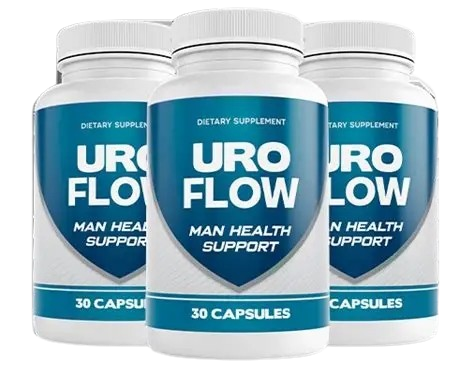If you’re in the business of supplying medical device components, you know how competitive—and regulated—the industry can be. Whether you’re providing critical parts for life-saving devices or components that make everyday healthcare products function, the pressure is on. Not just to deliver quality and precision, but to meet the most stringent safety and regulatory standards.
That’s where ISO 13485 Certification comes in.
You’ve probably heard of it before, but let’s be real—do you know what it really means for your business? ISO 13485 isn’t just some abstract set of guidelines; it’s a global standard that can open doors to new business, improve internal processes, and most importantly, build trust with your clients. But more than that, it can make the difference between being a part of the supply chain or being left out in the cold.
In this article, we’ll walk through why ISO 13485 certification is crucial for medical device component suppliers, how it can impact your business, and what steps you need to take to make it happen.
What Is ISO 13485 Certification?
At its core, ISO 13485 is an international standard for quality management systems (QMS) specific to the medical device industry. It outlines the requirements for a QMS that helps ensure medical devices and components are designed, manufactured, and distributed safely and consistently. It applies to both medical device manufacturers and suppliers—like you—who provide components, parts, or materials that go into those devices.
Here’s where it gets important: ISO 13485 isn’t just about checking off boxes during an audit. It’s about having a structured framework that ensures you’re consistently meeting global standards for safety, quality, and reliability. The end goal? Patient safety.
But, let’s be real: the value of ISO 13485 isn’t just in the framework. It’s about what it enables you to do.
Why Should Medical Device Component Suppliers Care About ISO 13485?
It might seem like just another hoop to jump through, but ISO 13485 certification is far more than just a nice logo on your website. Let’s explore why this certification should matter to you:
1. Increased Credibility and Trust
Think about it: if you were buying components for a critical medical device, would you rather choose a supplier with ISO 13485 certification or one without? ISO 13485 tells your clients—and their clients—that your company is committed to quality and safety. It gives them the peace of mind that the parts you provide won’t jeopardize the integrity of their products or the safety of their patients.
With ISO 13485, you’re showing that you’re more than just a vendor; you’re a trusted partner in the medical device supply chain.
2. Access to a Larger Market
It’s no secret that the medical device industry is massive and diverse, but here’s the catch: many medical device manufacturers require their suppliers to be ISO 13485 certified. So, if you’re not certified, you may be missing out on a huge chunk of potential business. Certification opens the door to working with bigger players who demand this standard from all their suppliers.
Plus, if you’re dealing with international clients, ISO 13485 certification is recognized globally. It can make all the difference when you’re negotiating contracts and expanding your market reach.
3. Streamlined Processes and Continuous Improvement
The beauty of ISO 13485 isn’t just about meeting regulations. It’s about creating a culture of continuous improvement within your company. ISO 13485 requires you to establish efficient and effective processes, monitor them regularly, and make improvements where necessary. Over time, this results in better products, fewer defects, and reduced risks.
Essentially, you’re building a system that not only meets requirements but constantly adapts to make your operations more efficient. That means fewer headaches, reduced costs, and ultimately, better profitability.
How ISO 13485 Certification Can Improve Your Internal Operations
One of the best parts about ISO 13485 is the positive impact it has on your internal operations. Yes, it’s a standard you need to comply with, but more importantly, it’s a system that drives efficiency and improvement across your organization.
1. Clear Documentation and Traceability
ISO 13485 emphasizes documentation control, which means every process you follow, every part you produce, and every change you make is well-documented. Why does this matter? Because it helps you maintain traceability. If something goes wrong, you’ll be able to track the source of the problem quickly, resolve it efficiently, and prevent it from happening again.
In the medical device industry, traceability is critical. Being able to prove exactly where and how a component was made is essential, especially when it comes to regulatory audits or product recalls.
2. Improved Supplier and Vendor Relationships
The standard also requires that you ensure your suppliers meet certain quality standards. This doesn’t just benefit your customers—it also helps you foster stronger relationships with your suppliers. By being certified, you signal to your vendors that you’re serious about quality, and this can lead to better collaboration, improved communication, and potentially even better pricing or priority treatment.
3. Efficient Risk Management
ISO 13485 requires a thorough risk management approach for everything you do—whether it’s design, production, or delivery. This means you’ll identify potential risks early on and put mitigation plans in place to minimize their impact. From equipment failure to supply chain disruptions, a proactive approach to risk management helps ensure smooth, uninterrupted production.
4. Employee Engagement and Accountability
A key part of the ISO 13485 process is that it requires all employees, from production floor workers to management, to understand their role in maintaining quality. As a result, employees tend to become more engaged and accountable for the outcomes of their work. When everyone is on the same page, you build a culture of quality that helps drive the entire business forward.
The Steps to Achieving ISO 13485 Certification
1. Gap Analysis
Start with a gap analysis to understand where your current processes fall short of ISO 13485 standards. This will help you pinpoint the areas you need to improve. If you’re unsure where to start, you can hire an experienced consultant to help guide you through this process.
2. Develop and Implement a Quality Management System (QMS)
The next step is to establish a comprehensive QMS that aligns with ISO 13485. This includes creating documented processes for everything from product design to post-production monitoring. It’s crucial to integrate quality management into every aspect of your operations.
3. Employee Training
ISO 13485 requires everyone in the company to understand the importance of quality management. Ensure your team is trained on the new processes and systems, and encourage them to buy into the culture of quality you’re building.
The Bottom Line: Is ISO 13485 Certification Worth It?
If you’re a medical device component supplier, the answer is an unequivocal yes. ISO 13485 certification is non-negotiable if you want to stay competitive, minimize risks, and ensure that you’re meeting the ever-evolving demands of the medical device industry. Beyond just compliance, it represents a commitment to quality, safety, and continuous improvement—values that will help you succeed in a challenging, high-stakes environment.
So, are you ready to take your business to the next level? Because the path to ISO 13485 certification isn’t just about meeting standards; it’s about setting yourself up for long-term success. And trust us, the payoff is worth it.




Leave a Reply